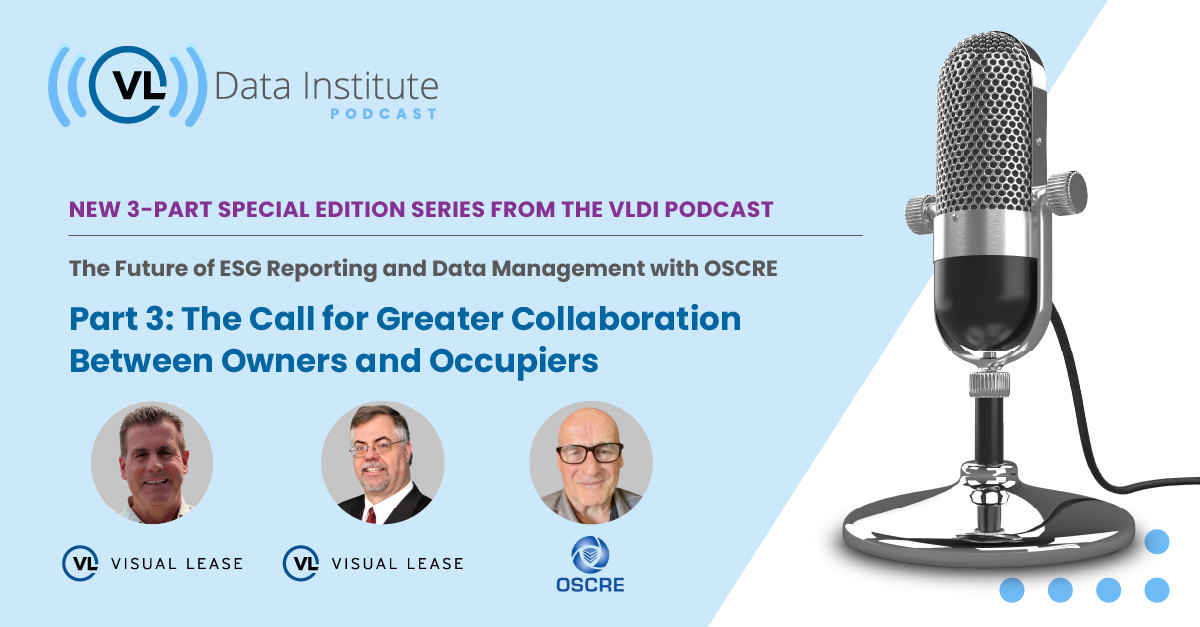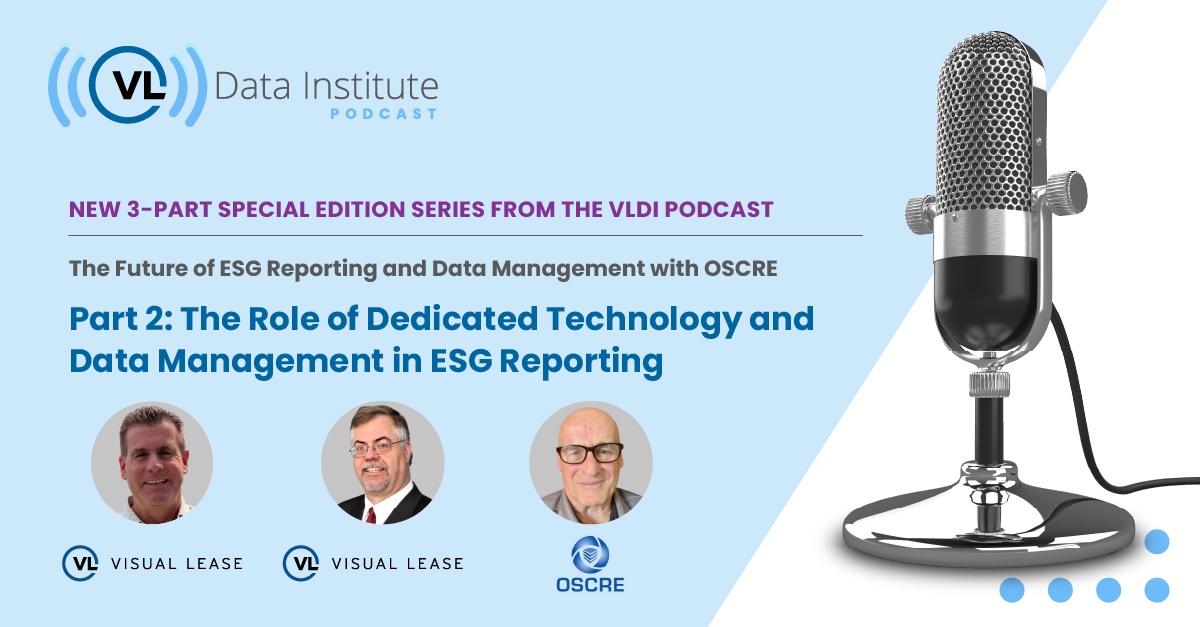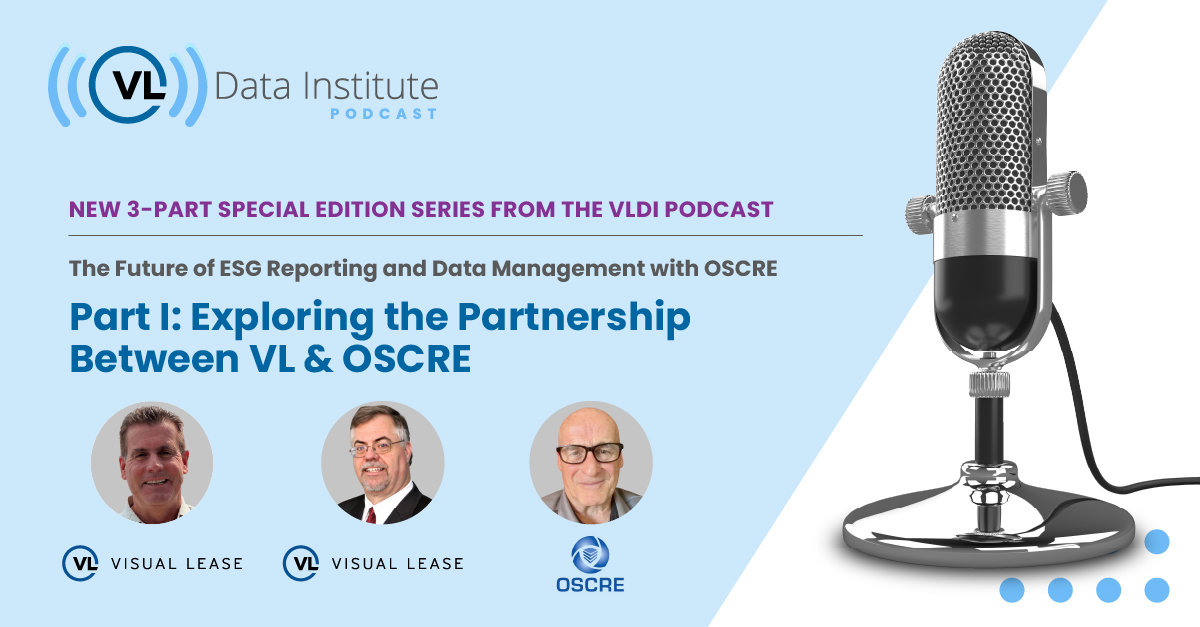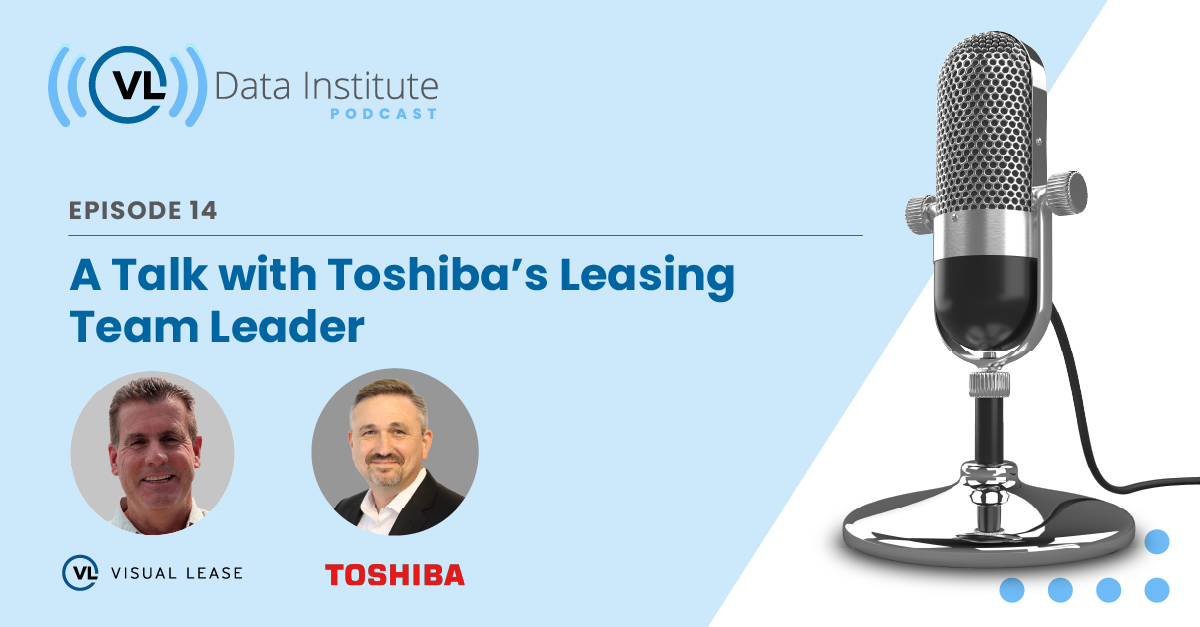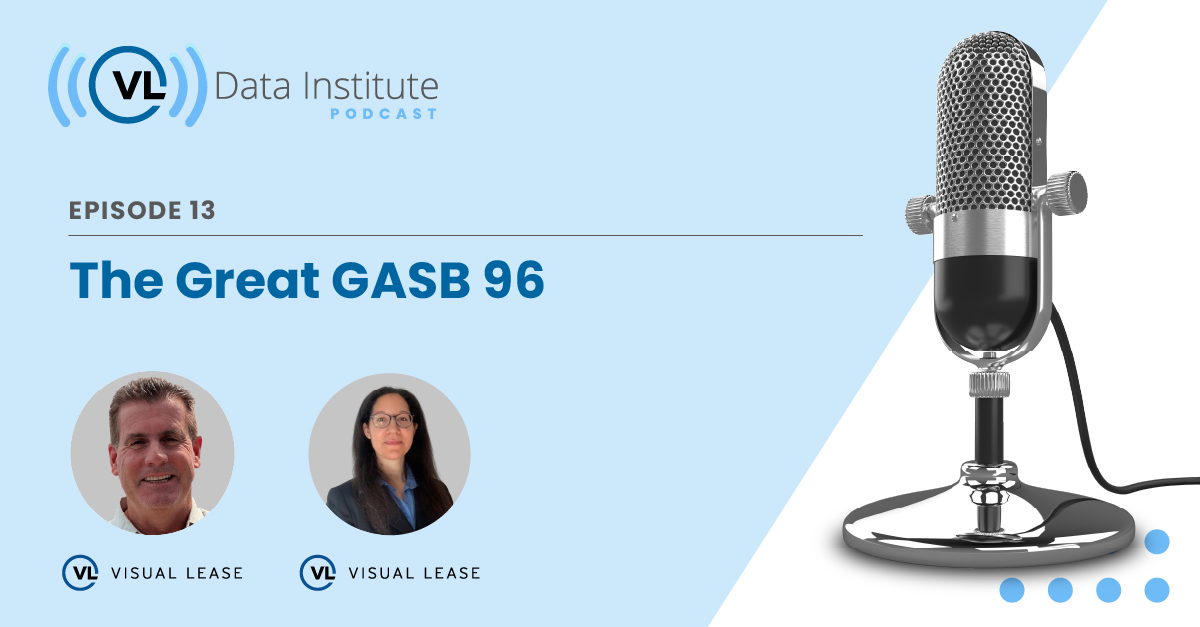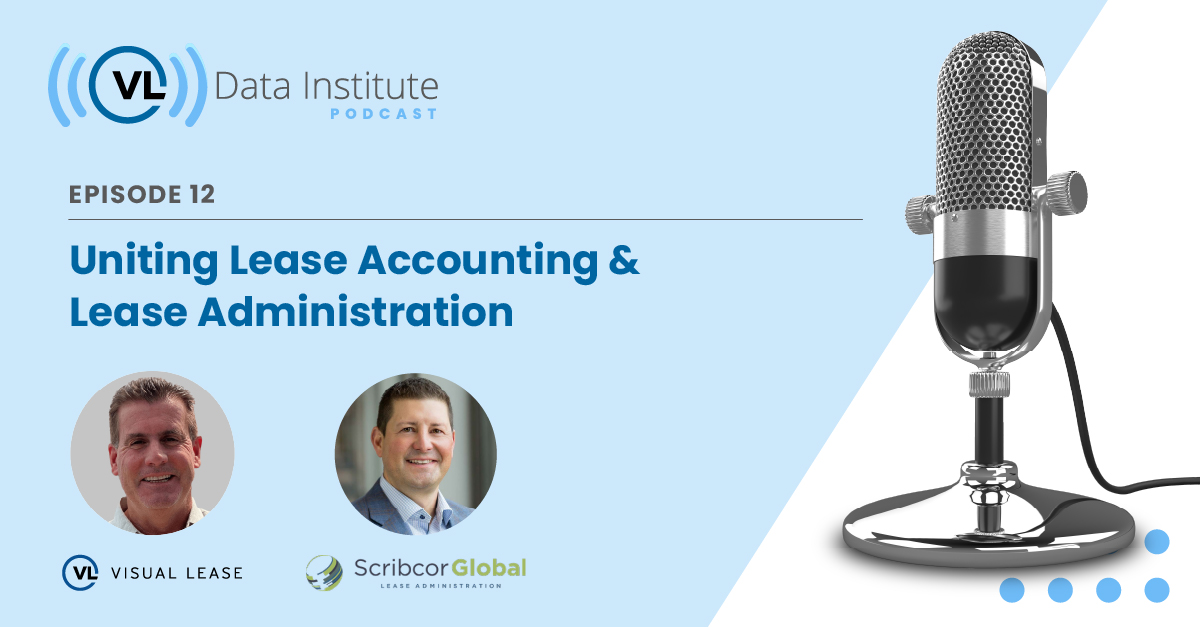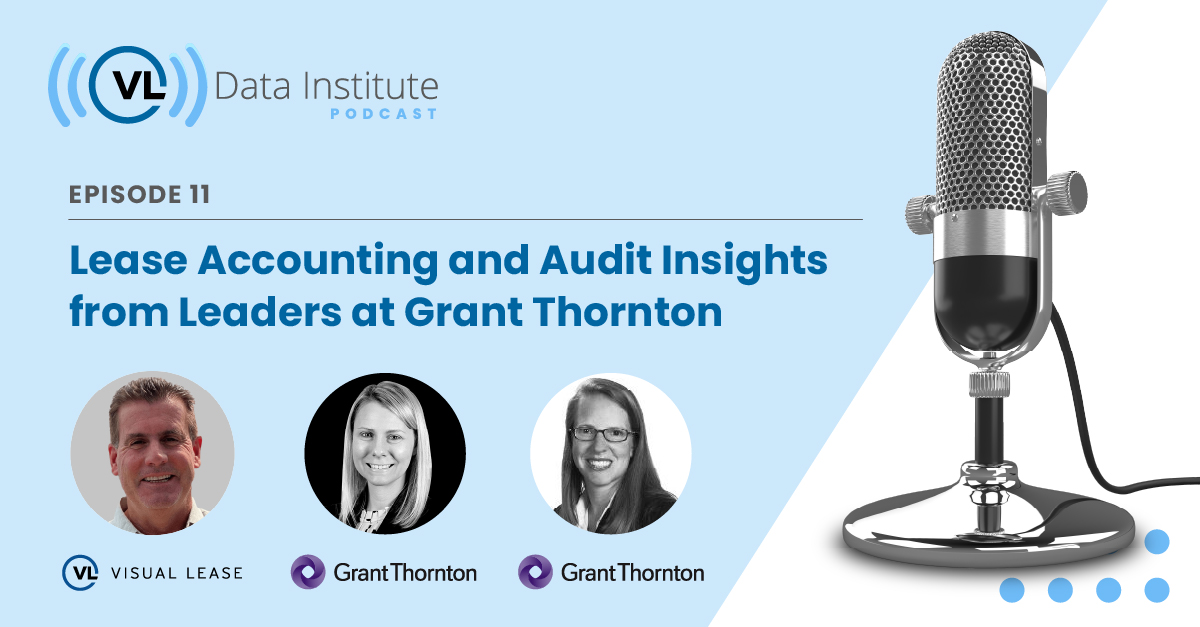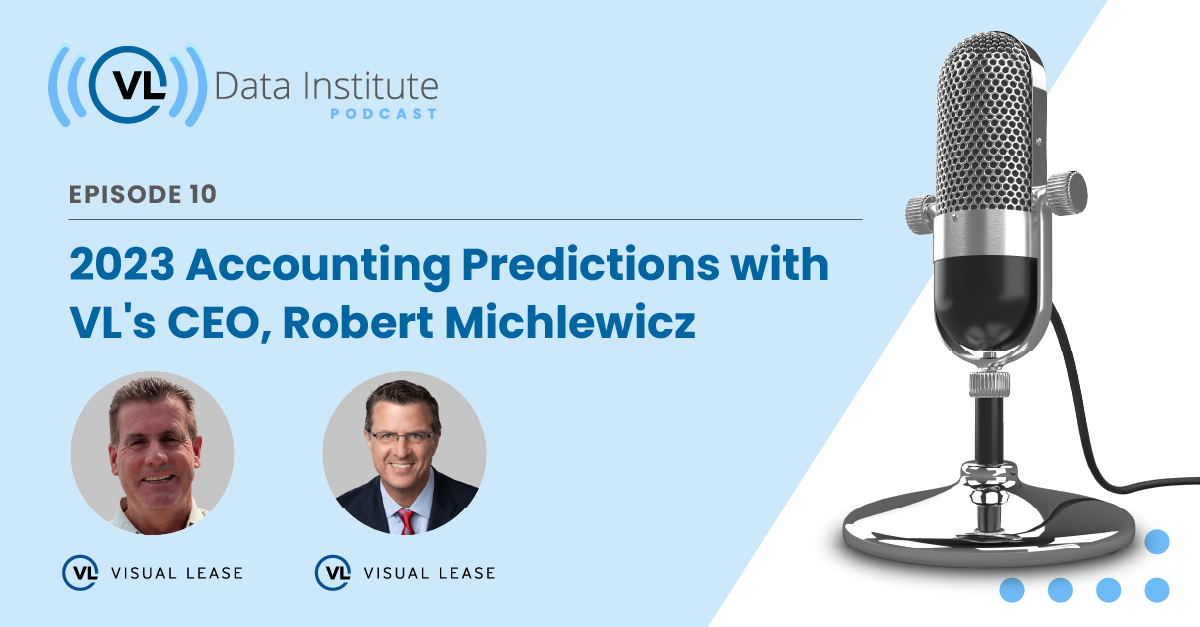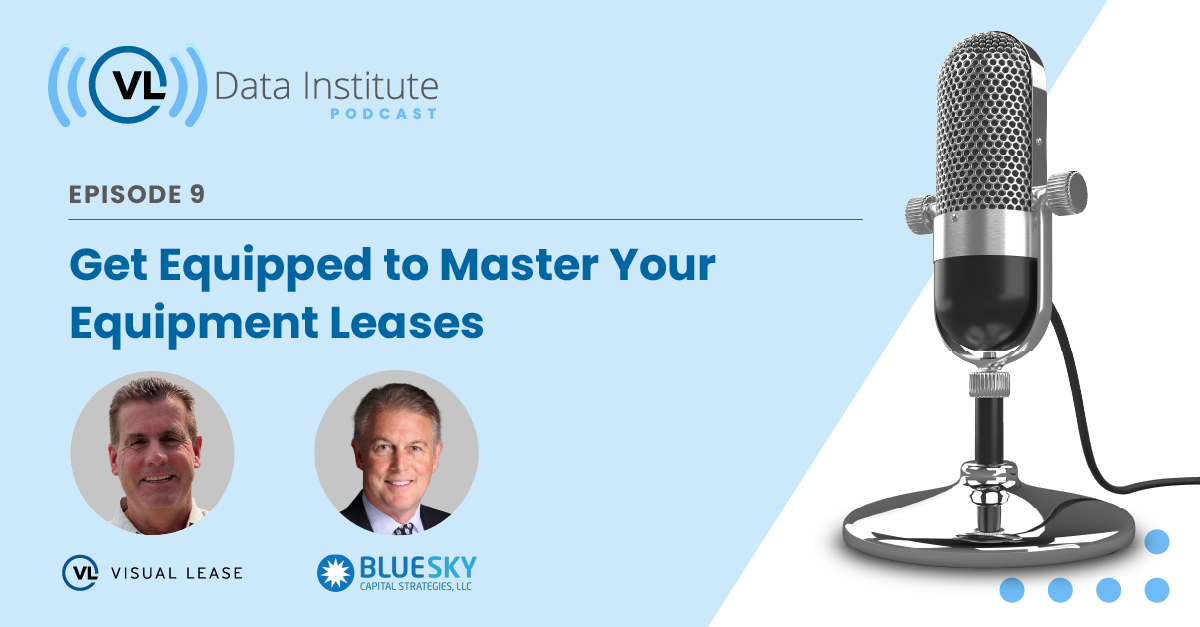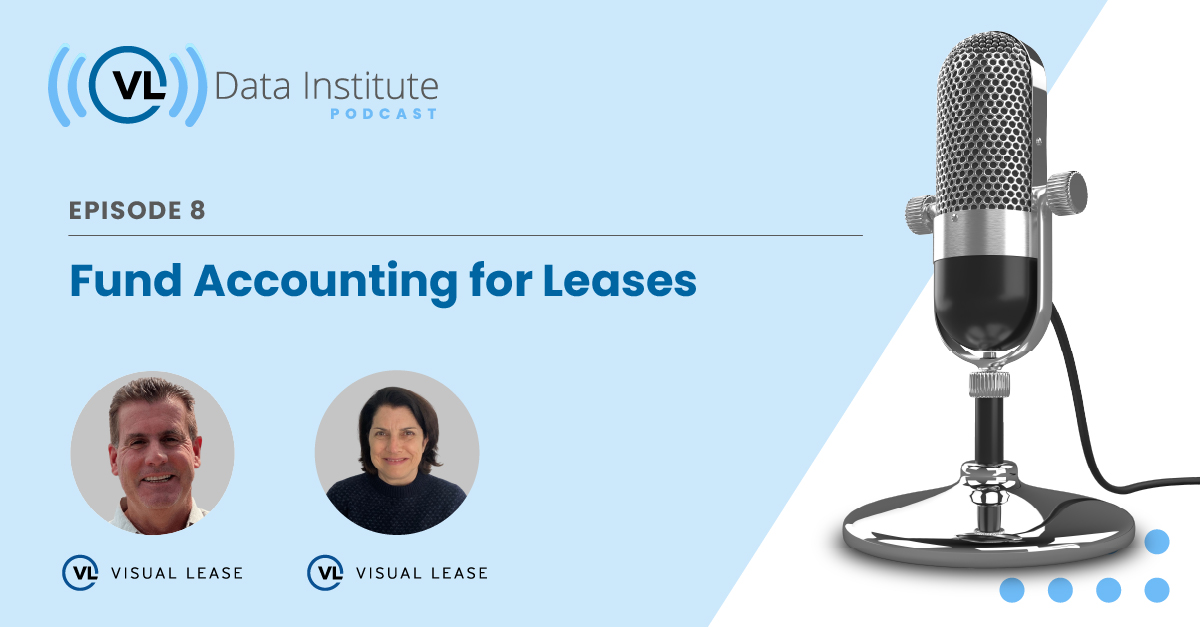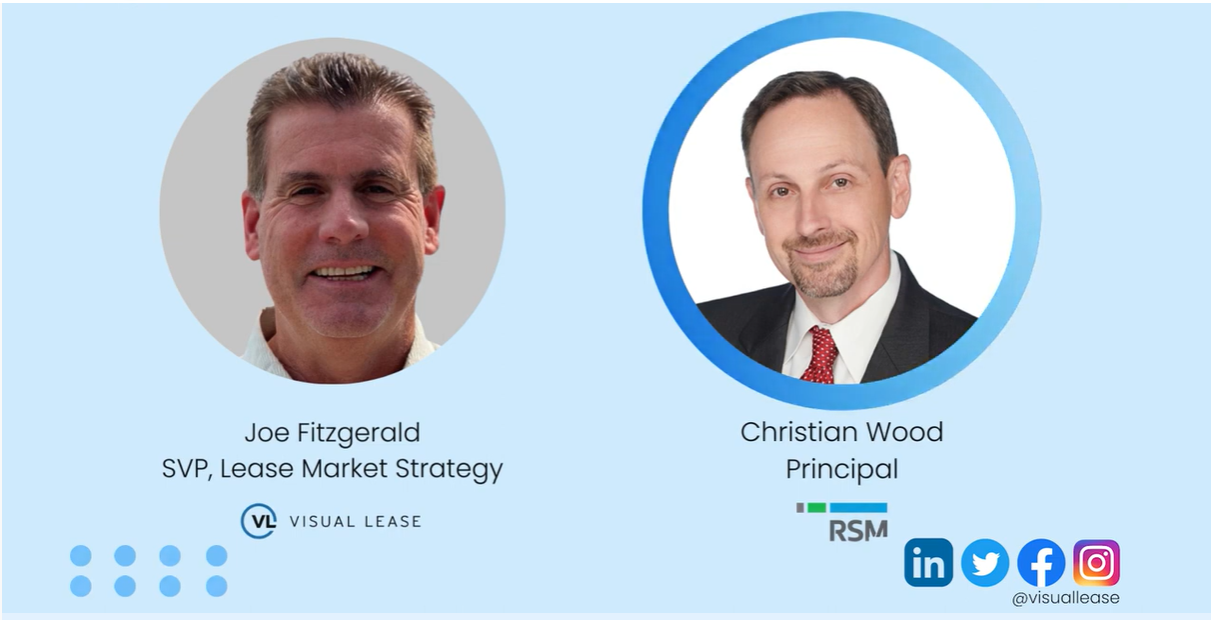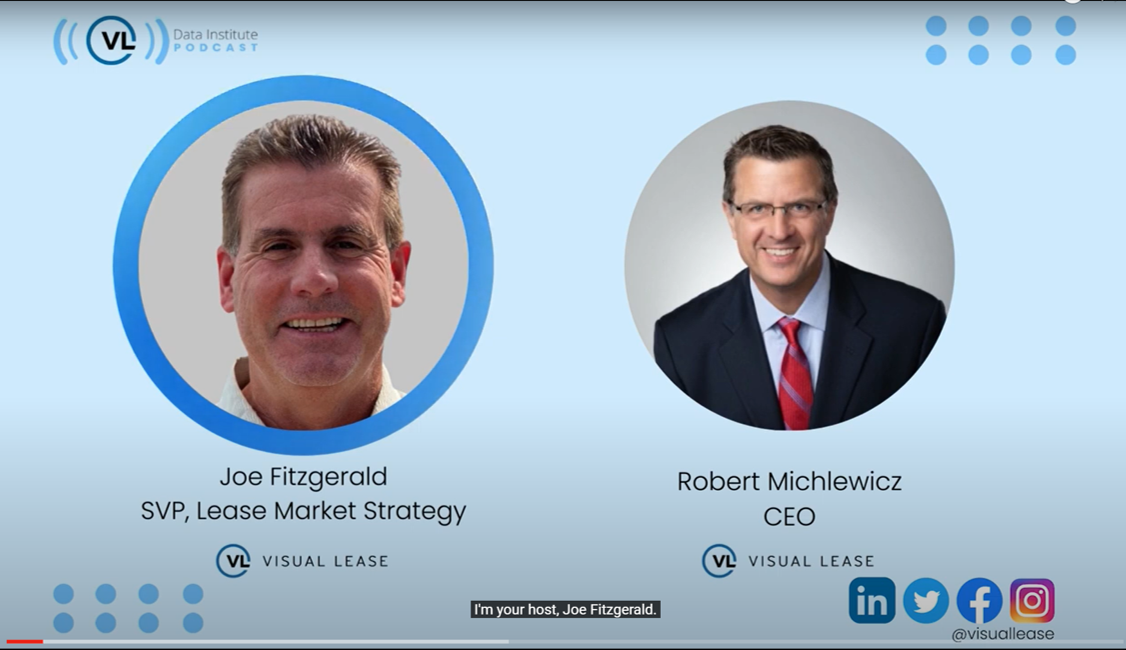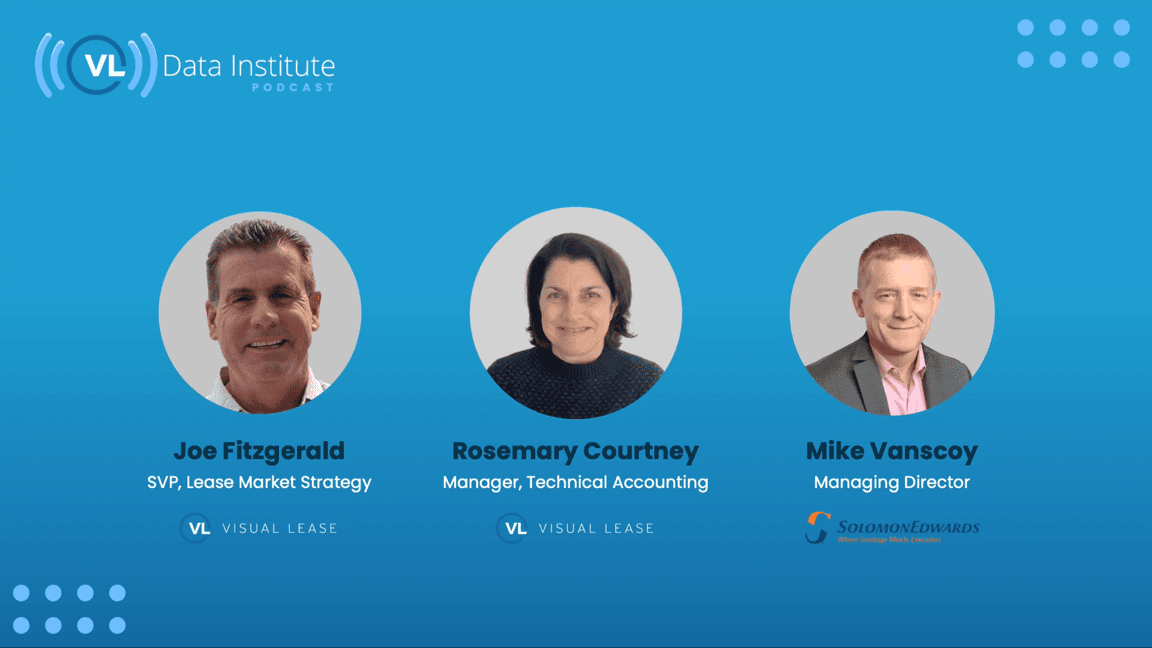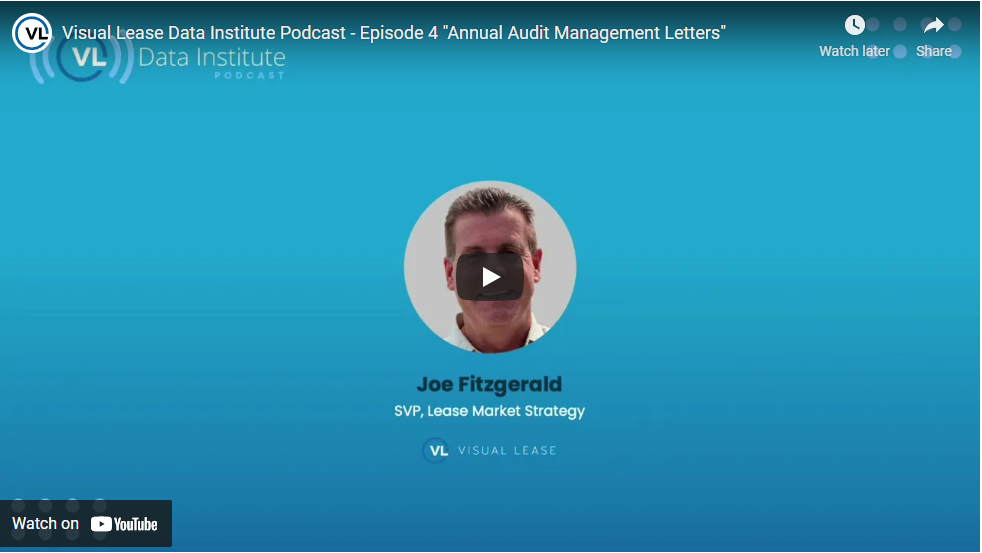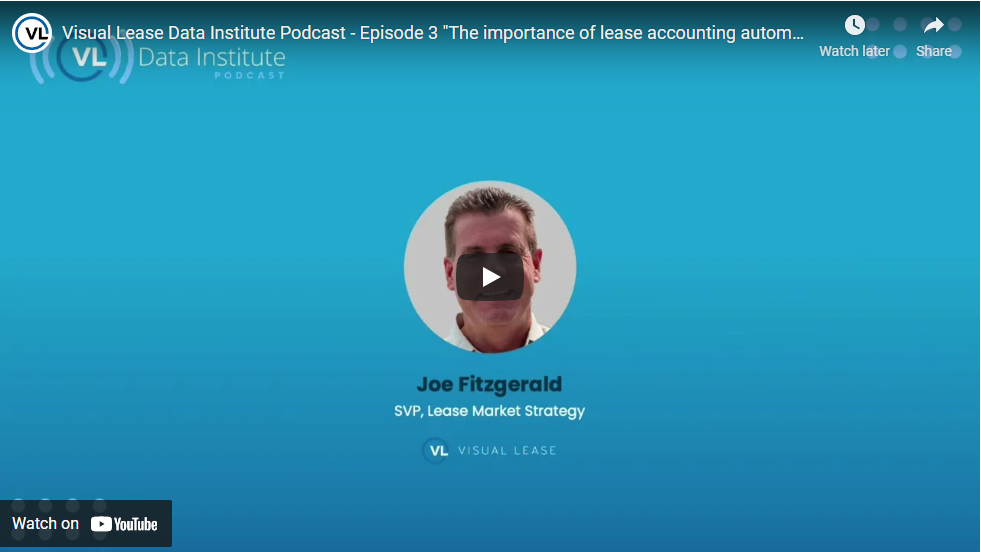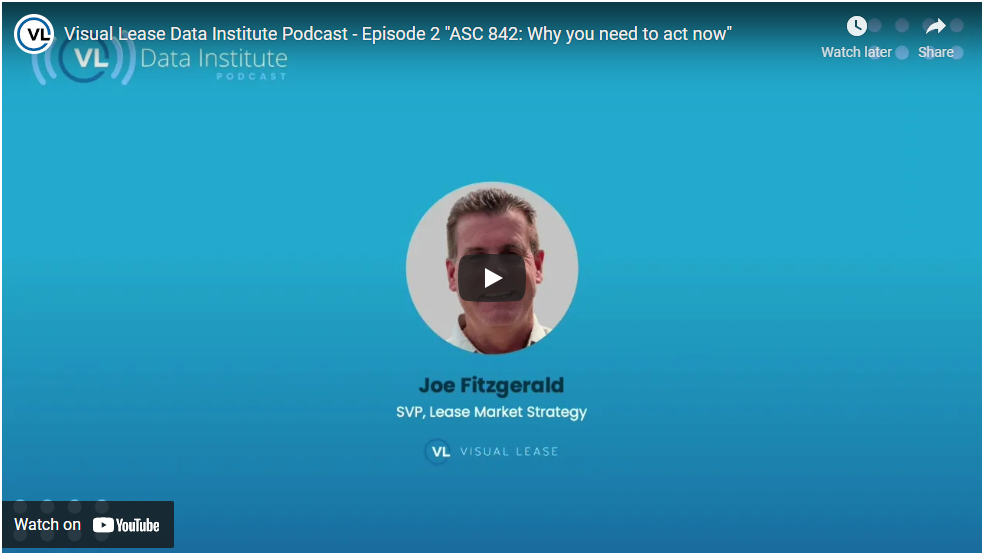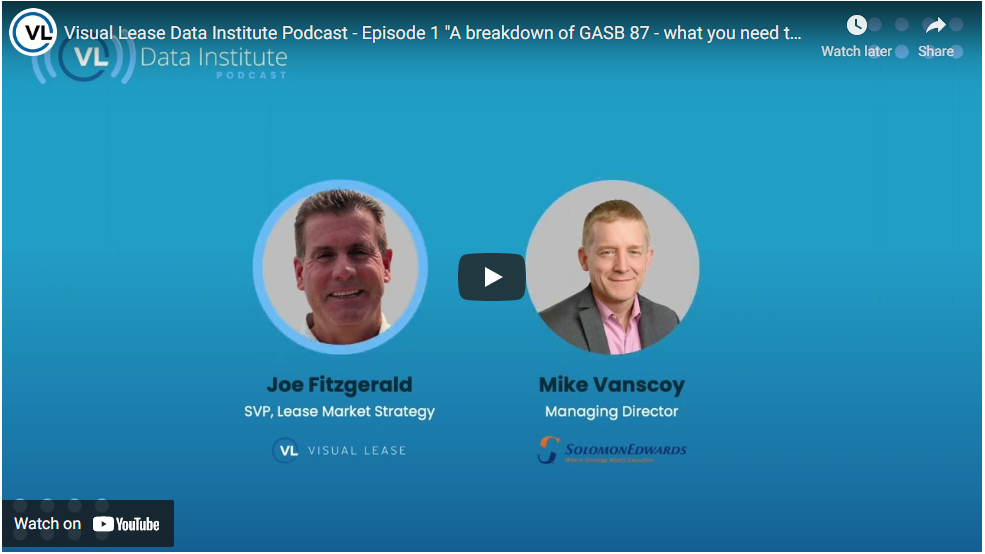SVP of Lease Market Strategy and Host, Joe Fitzgerald, sat down with Manager of Technical Accounting, Rosemary Courtney, to discuss how companies can tackle their fund accounting for leases.
Read Transcript
VLDI Podcast Episode 8 Transcript
Joe:
Hi, I’m your host, Joe Fitzgerald. Welcome back to the Visual Lease Data Institute podcast. Today’s guest is none other than Rosemary Courtney, Manager of Technical Accounting on the Product team at Visual Lease. For those of you who missed Rosemary’s previous episode with us when we discussed GASB 96. Rosemary has extensive experience in the financial space, particularly general accounting, financial close and reporting. She brings financial insight, strategic focus and business sense to all aspects of operations within the business. So let’s jump right in. Hello and welcome back, Rosemary. Thanks for joining us.
Rosemary:
Thanks, Joe. Happy to be here.
Joe:
So to start off, Rosemary, can you tell us about how you and your team support the development of Visual Lease?
Rosemary:
Sure. My team and I work closely with the rest of the product team and the developers. We help them to design and model new product features. And whenever there’s a new regulatory standard or a change in a previous standard or just in general, the platform needs some enhancement in some way, we’ll help test accounting scenarios before the output is given to the customers. And that’s called user acceptance testing. So we step in and act like the customers react when using the platform. With the outside world, we also meet with third parties like technical accounting consultants and our alliance partners and even the folks at the Accounting Standards Boards. We like to check in once in a while just to make sure we’re interpreting things correctly.
Joe:
So, Rosemary, with all the government customers, that Visual Lease has been onboarding of late. A concept that keeps coming up is fund accounting. Could you explain kind of broadly what fund accounting is?
Rosemary:
So fund accountings been around for a very long time. And fund accounting is the way accountants in non-profits like universities, hospitals and then all governments use fund accounting. It helps literally track the amount of cash assigned to different purposes. And the usage of that cash, the accountant is trying to make sure that money is not misappropriated for the wrong type of expenditure.
The money that comes in and out of that fund is restricted to be only for that specific purpose in non-profits. A good example is an endowment. So someone passes away and then donates as part of their will. Then within governments they’re given money or they raise money through taxes or municipal bonds, and that money gets budgeted for a specific purpose.
So the government fund accounting really have to keep a close eye on the cash balances and also the liabilities for that fund and also the vendor payments. The fund is a standalone organizational structure. It’s kind of like a department.
Joe:
How is Visual Lease helping companies tackle fund accounting for their leases?
Rosemary:
So what Visual Lease is doing is we’re giving the customer all of those journal entries that align with the government wide reporting. But then we’re also slicing and dicing those journal entries into the fund information that they need so they can satisfy what’s called their Annual Comprehensive Financial Report, which is the big government wide report that they do.
But at any given time, they can also explain to management or outsiders what the balances are in each of the funds, including lease related transactions. As the customer can take these fund journal entries, these additional fund journal entries, and they can automatically put them into their ERP if that’s where they belong. Or we leave them available in the event that they have a separate ledger for their fund transfer actions.
So we give them the flexibility there.
Joe:
Can you walk us through the differences between modified accrual and full accrual for us accountants?
Rosemary:
Sure. So we probably should start with what I think everybody recognizes, which is cash basis accounting. The cash comes and goes into the funds. But when we graduate to this full accrual accounting, which is what GASB 87 is based on, the expenses and the revenues are recognized when incurred, meaning that although the entity may not have received the income, the cash in or pay the vendors as of yet, the services have been contracted.
So there’s a liability. Somebody owes somebody else money. So when those services are rendered, there’s these obligations. And under full accrual, the entity has to record either a receivable money coming in in the future or a payable money going out in the future. Its saying at some point in the future, I owe this amount based on the services that happened today.
So funds in government exist on what’s called a modified accrual basis where the cash is there, but also government funds modify that a bit to show short term assets and liabilities. Things that you know or they know will be coming due. They focus on the cash available and the short term obligations because they need to know kind of the financial health of that fund, what they’ve been given in the way of cash in and what they know that project will owe.
So that’s what’s modified about it. So the government entity has to do both this GASB 87 full blown, full accrual reporting and simultaneously it has to do modified accrual. So that’s why it needs the two different sets of journal entries. And in between they cross walk one to the other in a reconciliation that they do.
So it’s pretty complicated.
Joe:
Any closing thoughts and how organizations you know, can successfully set up for their fund accounting?
Rosemary:
I guess you can tell there’s so many moving parts. And what we’ve experienced in helping the implementations organizations, those that are going on to 87 is just really a precursor, is just making sure that you really understand those different buckets that full accrual and then again what’s on the horizon on a short term basis from the liabilities and the assets.
And then they also need to have granularity on that cash because that cash has to be split in many ways. So it’s up front, you knowing how your organization flows is what I would advise because all of those will in the future move in various directions. So it’s having a really clearly drawn organizational map in the beginning so that things can be moved and allocated in the future cleanly.
Joe:
That will conclude today’s episode of the VLDI Podcast. Rosemary, thank you so much for being here and sharing your expert knowledge with us. If you enjoyed this episode and want to catch up on all things VLDI, be sure to follow our LinkedIn, Twitter, Instagram and Facebook pages @visuallease. And don’t forget to tune in to the next episode of the Visual Lease Data Institute podcast, where our focus is on helping you and your company transform your lease accounting compliance requirements into financial opportunities.











